When it takes the Cuban to France, the result may be a "Timba a la Americana".
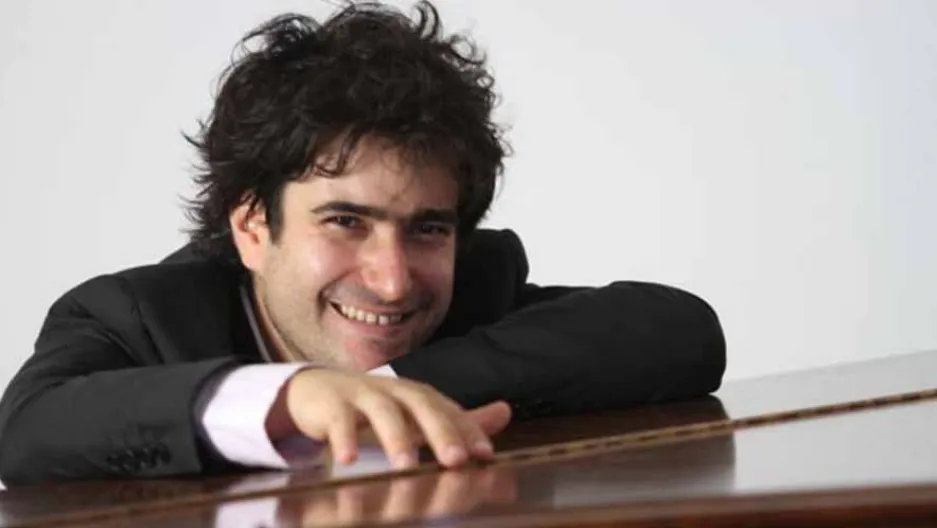

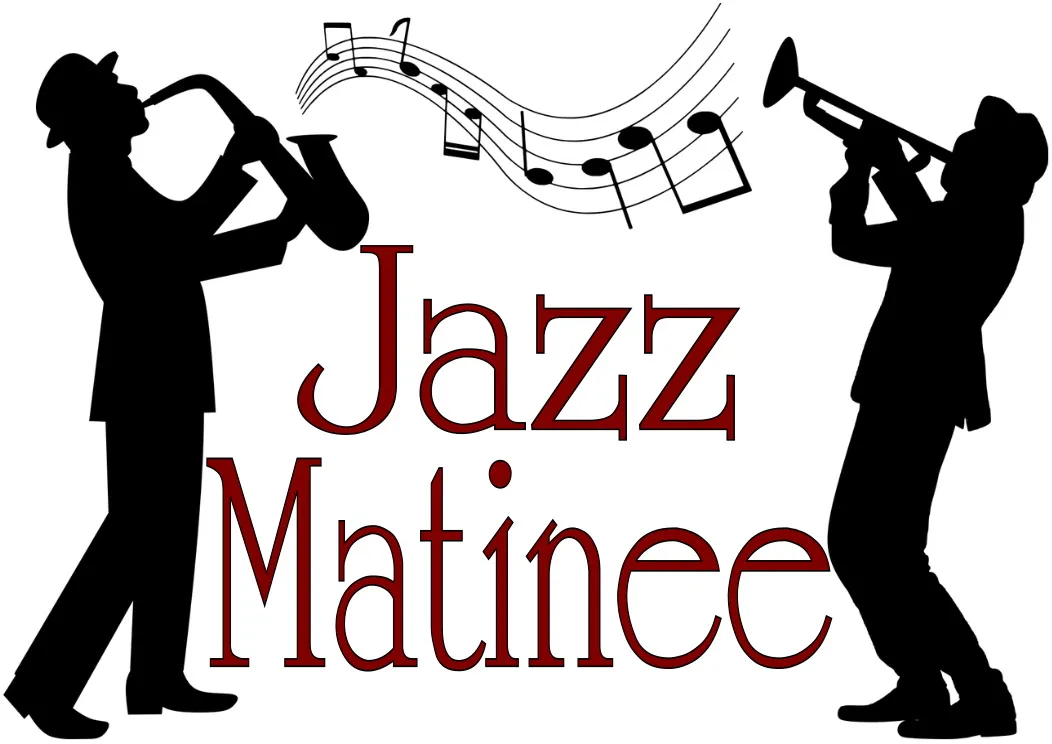
Wenn es den Kubaner nach Frankreich verschlägt, dann entsteht die “Timba a la Americana”.


Cuban pianist Harold López-Nussa meets American bassist Michael League (also known as the leader of the jazz band "Snarky Puppy") and the idea of starting a project together is born. And all of a sudden, everything turns out unexpectedly and in a way that none of the protagonists could have imagined. Harold López-Nussa leaves the Island where he grew up and goes to live in France. The American follows him and, as if that weren't enough to change, they change record companies and are suddenly signed to Blue Note.
Der auf Kuba lebende Pianist Harold López-Nussa trifft auf den amerikanischen Bassisten Michael League (auch bekannt als Kopf und Bandleader der Jazz-Formation “Snarky Puppy”) und es entsteht die Idee ein gemeinsames Projekt in Angriff zu nehmen. Und plötzlich geschieht alles so unerwartet, wie es sich wohl keiner der Protagonisten zuvor ausgedacht hatte. Harold López-Nussa verlässt seine Heimatinsel und lässt sich in Frankreich nieder. Der Amerikaner folgt ihm und, als wäre es nicht genug der Veränderung, wird die Plattenfirma gewechselt und plötzlich ist man bei “Blue Note” unter Vertrag.
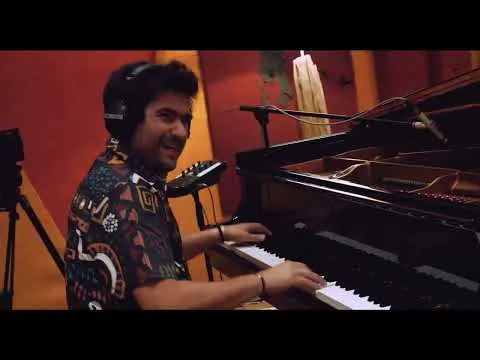
They recorded with Grégoire Maret on harmonica, Luques Curtis on bass, Bárbaro "Machito" Crespo on congas and Harold's brother Ruy Adrián López-Nussa on drums. This is how "Timba a la Americana" was born. Roughly speaking, the eleven compositions that make up the album can be described as what could generally be called remembering a homeland that has been abandoned. When snow and rain alternate in Toulouse, France, and at the same time the sun is trying to do its best in Havana, it can be very inspiring.
Mit ins Tonstudio kommen Grégoire Maret mit seiner Mundharmonika, Luques Curtis am Bass, Bárbaro "Machito" Crespo an den Congas und Harolds Bruder Ruy Adrián López-Nussa am Schlagzeug. Es ist die Geburtsstunde von “Timba a la Americana”. Weit umschreibend lassen sich die elf Kompositionen auf dem Album als das bezeichnen, was allgemein auch als eine Erinnerung an die verlassene Heimat bezeichnen könnte. Wenn in Toulouse/Frankreich sich Schnee und Regen abwechseln und gleichzeitig in Havanna die Sonne ihr Bestes versucht, dann kann dies sehr wohl inspirierend sein.
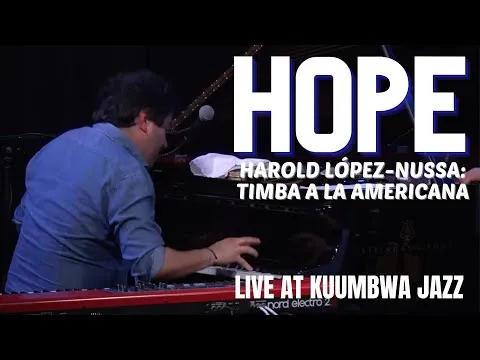
"It was emotional for me to be in France and listen back to these ideas from the past because the transition for me was not easy,” Harold recalls. “In Cuba, musicians would come to my house several times a week, to play, to party. My daughters grew up going to concerts every week. We were very active with music.”
These recordings of inspirations did more than reinforce Harold's nostalgia for his former life on the other side of the world. They were a confirmation of what he already knew: his next creative steps would be different. Entirely different.
"Es war für mich sehr bewegend, in Frankreich zu sein und diese Ideen aus der Vergangenheit zu hören, weil der Übergang für mich nicht einfach war", erinnert sich Harold. "In Kuba kamen die Musiker mehrmals pro Woche zu mir nach Hause, um zu spielen und zu feiern. Meine Töchter wuchsen damit auf, jede Woche zu Konzerten zu gehen. Wir waren sehr aktiv in der Musik."
Diese aufgezeichneten Inspirationen taten mehr, als nur Harolds Sehnsucht nach seinem früheren Leben am anderen Ende der Welt zu verstärken. Sie bestätigten, was er bereits wusste: Seine nächsten kreativen Schritte würden anders sein. Ganz anders.

In Cuba, Harold López-Nussa was known for playing classic Latin Jazz, but he wanted to break out of this. It was precisely this pigeonhole that the musician wanted to escape. He wanted to explore more complicated forms and melodies that were more independent of the Latin style.
"I had all these feelings of a challenge, of a new life, of new things that were going to happen for us. It was a lot of new things, and of course that's reflected in the music, but I still felt this conflict: I want this music to sound like Cuba, but how can it sound like Cuba if I'm not there?"
Denn auf Kuba war Harold López-Nussa für seine Interpretationen im Bereich des klassischen Latin-Jazz bekannt. Exakt jener Schublade versuchte der Musiker zu entfliehen und sich mehr den komplizierteren Formen und vom Latin-Style unabhängigeren Melodien auszuprobieren.
"Ich hatte all diese Gefühle der Herausforderung, des neuen Lebens, der neuen Dinge, die für uns vor sich gingen. Es war viel Neues, und das spiegelt sich natürlich in der Musik wider, aber ich spürte immer noch diesen Konflikt: Ich will, dass diese Musik nach Kuba klingt, aber wie kann sie das, wenn ich nicht dort bin?"

Michael League encouraged the European newcomer to translate Dizzy Gillespie's arrangements into "modern times", while at the same time not ignoring his own roots. The result is "Timba a la Americana", a provocative, colourful and effortlessly unified cycle of songs that amounts to a modernisation of Latin jazz from the ground up. "This is my look back to Cuba," is Harold's comment. "I am thinking about our life there, about my friends and about the music that we were making. When I first started out, it was just a little idea, almost like a baroque theme or something. As I was playing it, I remembered that we were playing to a slow rumba."
So regte Michael League den Neuankömmling in Europa an, doch einmal den Versuch zu starten, Arrangements eines Dizzy Gillespie in das „Neuzeitliche“ zu übertragen, gleichzeitig allerdings auch nicht die eigenen Wurzeln zu ignorieren. Das Ergebnis ist: “Timba a la Americana”, ein provokanter, farbenprächtiger, mühelos vereinheitlichter Songzyklus, der auf eine Modernisierung des Latin Jazz von Grund auf hinausläuft. "Das ist mein Blick zurück nach Kuba", sagt Harold. "Ich denke an unser Leben dort, an meine Freunde und die Musik, die wir gemacht haben. Als ich anfing, war es nur eine kleine Idee, fast wie ein barockes Thema. Als ich spielte, fiel mir ein, dass wir zu einer sehr langsamen Rumba.”
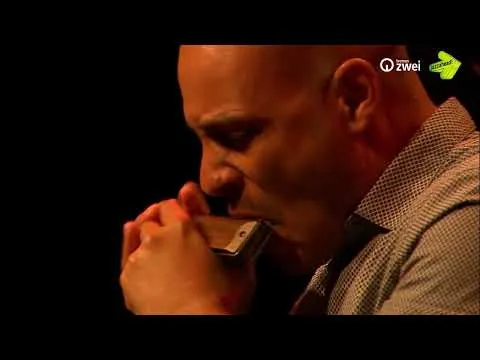
"It has a couple of pieces that can be described as classical rhythms from a long time ago, like rumba and conga and so on," says Harold. "Then there are some pieces where the basic rhythm is not so obvious. There is a certain complexity to them, which I also love. But I didn't want to lose the groove. I love to dance and I always think it's great when people dance. To me that means that the music is alive and kicking".
“Es gibt einige Stücke, die man als klassische Rhythmen aus längst vergangenen Zeiten bezeichnen kann, Rumba und Conga und so weiter", sagt Harold. "Dann gibt es einige Stücke, bei denen der Grundrhythmus nicht so offensichtlich ist, und es gibt eine gewisse Komplexität, die ich auch liebe. Aber ich wollte den Groove nicht verlieren. Ich liebe es zu tanzen, und ich finde es immer toll, wenn die Leute tanzen. Das bedeutet für mich, dass die Musik lebendig ist."


Jazz-Chronik
All Jazz-Matinee performances
Ada Morghe, Alfredo Rodriguez, Alma Naidu, Alune Wade, Andrea Motis, Balimaya Projekt, Bai Kamara Jr. & The Voodoo Sniffers, Bebo Best & The Super Lounge Orchestra, Beat Funktion, Big Bad Voodoo Daddy, Blue Note Tokyo, Breakdown Brass, Candy Dulfer, Carlos Reisch & The Jazz-RAPertoire, Christmas-Jazz, Cantal Acda & The Atlantic Trifters, Cécile McLorin Salvant, Club des Belugas, Cory Henry, Damian Lewis, David Peña Dorantes, De-Phazz, Debo Band, Dominic Miller, Dominique Fils-Aimé, Eartha Kitt, Emmet Cohen, Erik Truffaz, Esther Sévérac, Fat Freddy’s Drop, Fixi & Nicolas Giraud, Footprint Project, Gare Du Nord, Galactic, Ghoast-Note, Goran Bregović & The Wedding and Funeral Orchestra, Gyedu-Blay Ambolley, Gypsophilia, Hania Rani, Herbert Pixner Projekt, Ibrahim Maalouf, Imperial Tiger Orchestra, Ina Forsman, Indra Rios, Isaac Birituro and The Rail Abandon, Jazz meets Pop, Jazzkantine, Jeff Goldblum & The Mildred Snitzer Orchestra, Jembaa Groove, Jennifer Hartswick, Joe Bel, Jowee Omicil, Jon Batiste, Julian Lage,Jule Malischke, Jungle by Night, Jungle Fire, Karen Souza, Kinga Glyk, Kyle Eastwood, Lady Blackbird, Lars Kutschke, Laufey, Laurent Bardainne & Tigre D'Eau Douce, Lee Ritenour, Les Égarés - Sissko, Segal, Parisien, Peirani, Les Yeux D'La Tête, Lisa Bassenge, Liv Warfield, Lizz Wright, Love Songs, Luca Sestak-Trio, Madeleine Peyroux, Maik Mondial, Malika Tirolien, Malted Milk, Maria Mazzotta, Martin Grubinger, Maya Fadeeva, Monika-Roscher-Bigband, Monkey House, Mo Kolours, Muito Kaballa, New Cool Collective, Nils Petter Molvær, Nostalgia 77, Nubiyan Twist, Paco de Lucia, Peter Lipa, Parov Stelar, Phat Phunktion, Quatro Nuevo, Ranky Tanky, Rebekka Bakken, Redtenbacher’s Funkestra, Rita Payes Roma, Rocket Men, Roberto Fonseca, Robin McKelle, Rhythm Future Quartet, Shotnez, Ska-Jazz, Snarky Puppy, St. Paul Peterson, Sunbörn/The KutiMangoes,Soothsayers/Youthsayers, TaxiWars, The Bahama Soul Club, The Budos Band, The Crusaders, The Jazz Defenders, The Jakob Manz Projekt, The Jazzrausch Bigband, The Souljazz Ochestra, Triosence, Trombone Shorty, True Loves, Wanubalé, [Wynton Marsalis & Eric Clapton](@w74/jazz-matinee-wynton-marsalis-and-eric-clapton,06/2024 New Releases, 06/2024 New Releases,
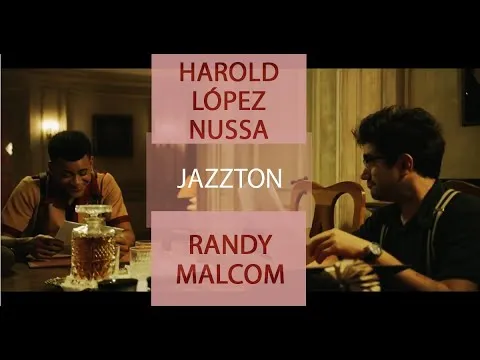

If you are interested in new releases on the market outside of jazz, I would highly recommend the Saturday post by [@seckorama](@seckorama), who will always keep you up to date with the latest New Tunes) !
Für alle Musikliebhaber, die sich auch abseits des Jazz über Neuerscheinungen auf dem Markt interessieren, kann ich wärmstens die samstägliche Post von @seckorama empfehlen, der euch mit seinen New Tunes stets auf dem aktuellen Stand hält!


